(3857 products available)














































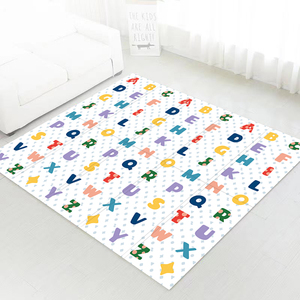
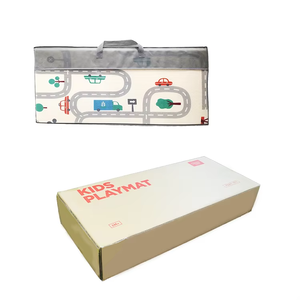






























































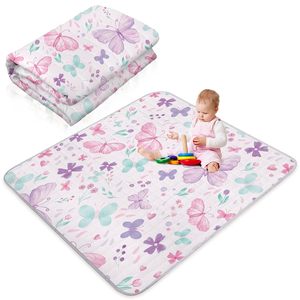
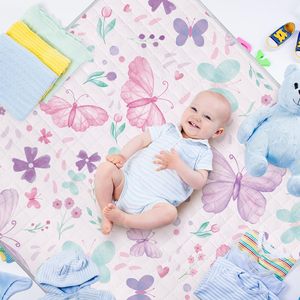
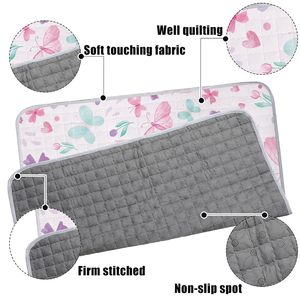
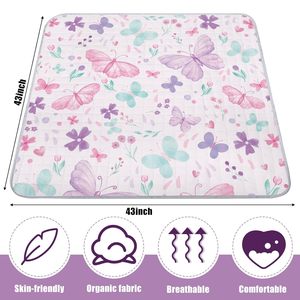

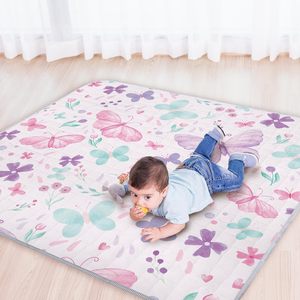
































































































Cushioned play mats for babies come in different types, each designed to meet specific needs and preferences. Here are some common types:
Foam Play Mats
These are the most popular cushioned play mats for babies. They are made of soft, lightweight, and shock-absorbent foam. This material offers a comfortable and safe surface for babies to play on. In addition, the mats usually feature colorful interlocking tiles. They may also have engaging patterns or educational elements such as numbers, letters, and shapes. These play mats are easy to assemble, clean, and customize in size.
Rubber Play Mats
These mats are typically made from natural or synthetic rubber. As a result, they provide a non-toxic and slip-resistant surface. This feature makes them ideal for active play. Furthermore, rubber play mats offer excellent cushioning and support. This quality protects babies during tummy time and when they start crawling and playing. However, they tend to be heavier than foam mats and may be more challenging to clean.
Textile Play Mats
Textile play mats combine plush cushioning with fabric surfaces. Usually, they are made from cotton or polyester. They are soft and comfortable for babies to lie on. Also, they often feature different textures, which stimulate touch, and machine-washable fabrics for easy cleaning. Moreover, textile play mats may have quilted designs, padded linings, and reversible styles.
Waterproof Play Mats
Waterproof play mats have a cushioned, absorbent top layer and a waterproof bottom layer. This design makes them spill-proof and easy to clean. Additionally, they are suitable for feeding times and other activities that may involve messes. These mats can be made of foam, vinyl, or other materials with a waterproof barrier. Moreover, they may have wipeable surfaces, removable top layers, and non-slip backing. Essentially, their features make them convenient and practical for parents.
Natural Material Play Mats
Natural material play mats are made from organic cotton, wool, jute, or bamboo. Naturally, they provide a soft, safe, and environmentally friendly surface for babies to play on. Additionally, they are non-toxic and hypoallergenic. This feature makes them ideal for eco-conscious parents or those with allergies. Moreover, these mats often have simple, natural designs that blend well with home decor.
Safety:
The first thing to check is whether the mat is made of non-toxic materials. This means it doesn't have harmful chemicals that could make a baby sick if they touch or put their mouths on the mat. Look for mats that have a safety certificate like 'CPSIA' which shows they were tested and found safe. Also, the surface of the mat should be smooth so a baby can crawl or roll around without getting hurt. It should be thick enough to cushion falls because babies are clumsy and drop their heads a lot when they try to crawl or reach for things.
Comfort:
The play mat should be soft enough for the baby to lie down and play comfortably without feeling hard surfaces underneath. It should have enough cushioning to protect the baby from bumps and bruises, especially when they start rolling over, crawling, and pulling up to stand.
Size:
Choose a mat that fits well in the space where it will be used. If it's for a small area, a medium-sized mat will be just right. But if there is plenty of room, a larger mat will give the baby more space to play. Also, think about how much floor space the baby needs as they grow - they will want to stretch out and move around more as they get older.
Portability:
Portability is key for parents on the go. If trips and playdates are frequent, a play mat that folds up small and rolls up like a sleeping bag will be easy to carry around. Look for ones that come with a handle or strap so they are always ready to take wherever needed.
Price:
Think about how much money the mat is worth. Some cushioned play mats are cheap, while others cost more because they have extra features. Decide what budget works best and choose a mat that gives good value for the money without compromising on important things like safety or comfort.
Cushioned play mats for babies are essential for ensuring the baby has a safe and comfortable space to play. They serve many purposes and have features that meet different needs. Below are the functions, features, and designs of play mats.
Play mats protect babies when they fall, especially if the baby is learning to crawl or walk. The cushioning and thickness of the mat reduce the impact of the fall, preventing injuries. They also provide a comfortable space for the baby to play, roll, and crawl. The softness of the mat ensures the baby is comfortable when playing.
In addition, play mats create a designated area for the baby to play. They also provide a space where the baby can interact with toys, enhancing their development. The different sections of the mat, such as the tummy time zone, crawling zone, and play zone, encourage the baby to engage in various activities, ensuring they are active.
Play mats have several features that make them suitable for use. Most play mats have a cushioned surface that protects babies. Cushioned play mats are also thicker than standard mats, providing more cushioning. In addition, many play mats have a double-sided design, with each side having a different pattern. This allows the caregiver to flip the mat over for a different look.
Moreover, many play mats have a non-slip surface that ensures the mat stays in place when in use. This non-slip feature is also beneficial when the baby starts to crawl or walk. Some play mats also have a waterproof layer that prevents spills or messes from seeping through the mat. This makes it easy to clean the mat and maintain it.
The design of cushioned play mats for babies focuses on providing a safe space for the baby to play. They are usually made with soft materials, such as foam, that are gentle on the baby's skin. The mats also come in various sizes, allowing parents to choose one that fits their living space.
In addition, play mats have different patterns and colors that make them visually appealing. They also have educational designs, such as numbers, letters, or shapes, that introduce the baby to different concepts. The play mats with multiple textures are also great for enhancing the baby's sensory experience.
To protect the baby and offer a good experience, it is vital to check the play mat's safety and quality. This will ensure that the baby is safe and comfortable while playing and exploring new things.
When choosing a cushioned play mat for babies, safety is a top priority. Here are some essential safety features to look for:
When it comes to quality features of cushioned play mats for babies, there are several important factors to consider to ensure safety, comfort, and durability. Here are some key quality features:
Q1: What are the benefits of cushioned play mats for babies?
A1: Cushioned play mats provide a soft, protective surface that reduces the risk of injury from falls, encourages comfortable tummy time, and offers a dedicated space for various activities, enhancing both safety and comfort for the baby.
Q2: How do I choose the right cushioned play mat for my baby?
A2: Consider factors such as thickness (at least 0.5 inches is recommended for comfort and protection), material (non-toxic, easy-to-clean, and durable), size (should fit the intended space and allow for growth in activity), design (aesthetics and developmental features), and safety standards.
Q3: How can I clean and maintain a cushioned play mat?
A3: Most cushioned play mats can be wiped down with a damp cloth and mild soap. Some are machine washable. Always follow the manufacturer's cleaning instructions to maintain the mat's safety and longevity.
Q4: At what age can I start using a play mat with my baby?
A4: Play mats can be used with newborns for tummy time and other activities from a few weeks after birth.
Q5: Where can I buy cushioned play mats for babies?
A5: Cushioned play mats for babies can be purchased from dedicated baby care shops, large retail chains, or online marketplaces like Chovm.com.